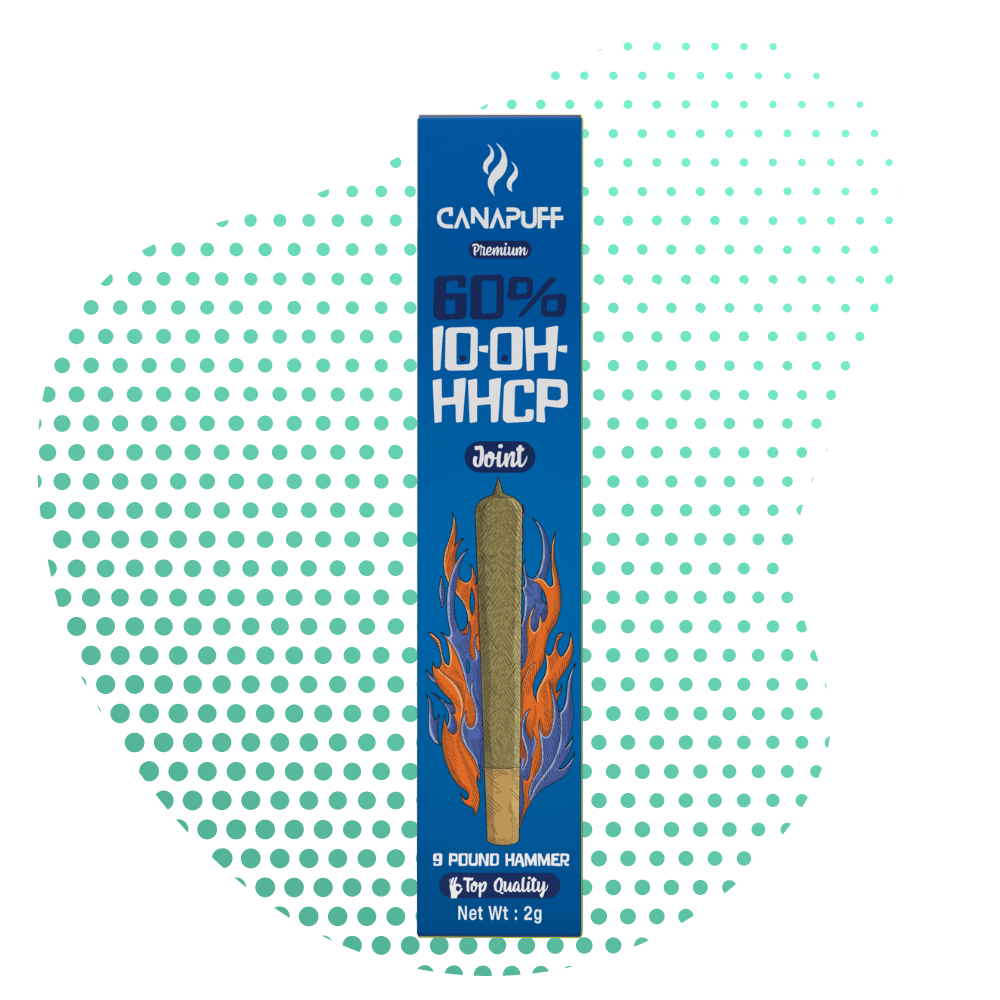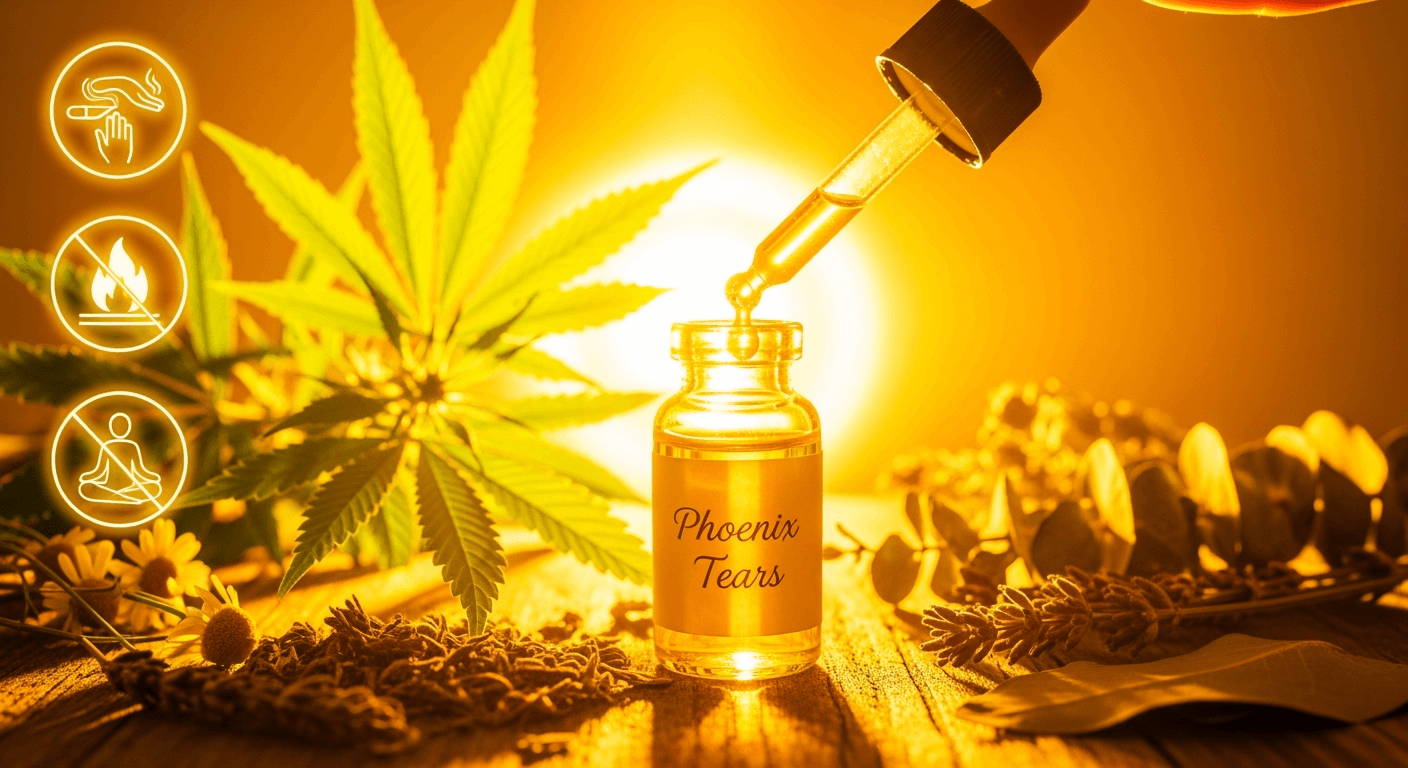Innehållsförteckning
Sativa vs. Indica: key difference between them
If you've ever stepped into a dispensary or browsed an online cannabis menu, you've undoubtedly come across the terms "Sativa" and "Indica." For years, these classifications have been the bedrock of how we understand and choose our cannabis. Sativa for energy, Indica for relaxation - it's a simple dichotomy that has guided countless consumers. But what if I told you the story is a little more complex, and perhaps, even more fascinating?
As someone who has spent years exploring the nuances of cannabis, from its cultivation to its consumption, I've seen firsthand how these classifications can both inform and, at times, misdirect. My journey into understanding cannabis began with these very labels, much like yours might be starting now. I remember my first few experiences, carefully selecting strains based on whether I wanted to be uplifted or unwind. Over time, however, as I delved deeper into the science and the evolving market, I realized that while the traditional Sativa-Indica distinction offers a helpful starting point, it's far from the whole picture.
This blog post aims to be your definitive guide to understanding the Sativa vs. Indica debate. We'll explore their historical origins, delve into their physical characteristics, dissect their chemical compositions, and discuss their reported effects. More importantly, we'll bridge the gap between traditional wisdom and modern scientific understanding, revealing why the conversation is shifting from broad classifications to specific chemical profiles. Whether you're a seasoned connoisseur or just beginning your cannabis journey, prepare to gain a deeper, more informed perspective that will empower you to make more precise choices.
The Roots: Origins and Geographic Distribution
To truly appreciate the differences between Sativa and Indica, we must first journey back to their origins. These two subspecies didn't just appear; they evolved over centuries, adapting to vastly different geographic and climatic conditions, which in turn shaped their unique characteristics.
Cannabis Sativa: The Tropical Traveler
Imagine lush, equatorial regions bathed in abundant sunlight, with long growing seasons and high temperatures. This is the native home of Cannabis sativa. Strains of Sativa trace their lineage to tropical and subtropical areas, including Southeast Asia, Central America, and Africa. These environments fostered the development of plants that could stretch towards the sun, maximizing light exposure over extended periods. Molecular evidence even suggests that Cannabis itself may have originated in low-latitude regions, challenging earlier theories that placed its genesis in Central Asia. My own experience with growing Sativa-dominant strains outdoors in a warmer climate confirmed their love for space and light; they just kept reaching for the sky!
Cannabis Indica: The Mountain Survivor
In stark contrast, Cannabis indica hails from the harsh, mountainous terrains of Afghanistan, Pakistan, India, and Turkey, particularly the rugged Hindu Kush mountain range. It was here, in cooler, more turbulent climates with shorter growing seasons and intense environmental stressors, that Indica plants evolved their distinct, hardy characteristics. The French botanist Jean-Baptiste Lamarck was the first to classify Cannabis indica in 1785, based on samples he received from India. These plants developed a more robust, compact structure, perfectly suited for surviving in challenging conditions.
Visual Cues: Physical Characteristics and Morphology
One of the most immediate ways to distinguish between Sativa and Indica is by their physical appearance. Even to the untrained eye, their morphological differences are quite striking.
Sativa: The Tall, Elegant Dancer
Sativa plants are the supermodels of the cannabis world - tall, slender, and graceful. They exhibit lanky growth patterns, often soaring to heights of 12 feet or more when cultivated outdoors. Their leaves are thin and narrow, with numerous finger-like projections, sometimes as many as 13 leaflets. The foliage tends to be a lighter shade of green, and you'll notice longer internodal spacing - the distance between sets of leaves on the stem. These plants also demand a more extended flowering period, typically 10-16 weeks, and while they may produce lower yields per plant, their flower structures are airier and less dense.
Indica: The Short, Bushy Powerhouse
In stark contrast, Indica plants are the stocky, robust athletes. They present a short, bushy appearance, usually topping out under 6 feet in height. They display broad, chunky leaves with fewer leaflets (typically 7-9), and often display a darker green coloration that can sometimes appear almost blue-black. Indica plants boast compact internodal spacing, and their flowering cycle is significantly quicker, usually 6-8 weeks. This rapid growth cycle and dense flower production often lead to higher overall yields. I recall a particular Indica grow where the plants were so dense, they looked like miniature Christmas trees, packed with frosty buds!
The Inner Workings: Cannabinoid and Terpene Profiles
While physical appearance offers a visual distinction, the true magic of cannabis lies within its chemical composition. The cannabinoids and terpenes present in each strain are the primary drivers of their effects.
THC and CBD Content: A Shifting Narrative
Traditionally, Sativa strains were thought to have higher THC-to-CBD ratios, leading to more cerebral and energizing effects, while Indica strains were associated with more balanced or higher CBD levels. However, modern analysis has revealed a more nuanced picture. Contemporary research shows that both Sativa and Indica varieties can contain similar ranges of cannabinoids, with THC levels typically ranging from 5-30% and CBD from 0.1-20% in both. For instance, the average THC content in THC-heavy Indica strains is approximately 17.3%, while CBD-dominant Indica averages 7.5% CBD. This suggests that relying solely on THC/CBD ratios to differentiate Sativa from Indica is an oversimplification.
Terpene Profiles: The Aromatic Architects of Effect
This is where the real distinction often lies: in the aromatic compounds called terpenes. These fascinating molecules not only give cannabis its diverse scents and flavors but also play a crucial role in modulating its effects, a phenomenon often referred to as the "entourage effect".
Myrcene: The Indica SignatureMyrcene is frequently dubbed the "couch-lock" terpene, and for good reason. It's commonly found in higher concentrations in Indica strains and is largely responsible for their renowned sedative effects. Strains containing more than 0.5% myrcene are often classified as Indica-leaning due to their strong sedative properties. If you've ever felt deeply relaxed and ready for bed after a particular strain, chances are myrcene was a key player.
Limonene, Pinene, and Terpinolene: The Sativa SparkSativa strains, on the other hand, typically boast higher concentrations of terpenes like limonene, pinene, and terpinolene. These terpenes contribute to the energizing and uplifting effects commonly associated with Sativas.
- Limonene is known for its mood-enhancing properties and a distinct citrusy aroma.
- Pinene promotes alertness and memory retention, often with a fresh, piney scent.
- Terpinolene offers floral aromatics and is frequently found in strains that provide a stimulating effect.
Effects on the Body and Mind: Therapeutic and Recreational Applications
The interplay of cannabinoids and terpenes dictates the diverse therapeutic and recreational effects experienced by users. While individual responses can vary, general patterns have emerged from both scientific studies and user reports.
Therapeutic Effects and Medical Applications
Cannabis has been utilized for its medicinal properties for centuries, and the distinct chemical profiles of Sativa and Indica strains make them suitable for various medical conditions.
Indica Strains: The Soothing HealerIndica strains are often preferred for conditions requiring relaxation and sedation. Research indicates a significant statistical preference for Indica strains in managing a range of ailments.
- Pain management (p=0.001)
- Sleep disorders and insomnia (p\<0.001)
- Sedation needs (p=0.015)
Specific conditions including non-migraine headaches (p=0.042), glaucoma (p=0.036), neuropathy (p=0.024), spasticity (p=0.048), seizures (p=0.031), and joint pain (p=0.048)
Sativa Strains: The Uplifting AllySativa strains, conversely, show preference for conditions requiring mental stimulation and mood enhancement.
- Euphoria induction (p\<0.001)
- Energy enhancement (p=0.022)
- Depression and mood disorders
- Daytime symptom management without sedation
My personal experience aligns with these findings. I've found Indica-dominant strains to be invaluable for winding down after a long day or alleviating persistent aches, while Sativa-dominant strains have been my go-to for creative projects or needing a boost of focus. Medical cannabis studies also highlight the broader benefits, with 88.12% of patients with comorbid anxiety and depression experiencing symptomatic relief from medical cannabis, particularly with CBD-dominant products for depression management.
Recreational Effects and User Experience
Beyond medical applications, user surveys consistently report distinct subjective experiences between Indica and Sativa strains in recreational settings.
Indica Effects: The Body HighUsers commonly report the following effects from Indica strains:
- Relaxation (85% of users)
- Sleepiness and fatigue (72% report)
- Body-focused "couch lock" sensations
- Increased appetite (64% report)
- Difficulty performing routine tasks (16% report)
- Sativa Effects: The Head HighSativa effects typically feature:
- Happiness and euphoria (66% report)
- Increased focus (55% report)
- Motivation enhancement (52% report)
- Alertness and energy (54% report)
- Enhanced creativity and sociability
- Higher likelihood of anxiety or paranoia (21% vs 10% for Indica)
It's worth noting the increased likelihood of anxiety or paranoia with Sativa strains. This is something I've personally experienced when overindulging in a potent Sativa. It's a reminder that while Sativas can be incredibly uplifting, it's always wise to start low and go slow, especially if you're prone to anxiety.
Here's a table summarizing the key differences:
|
Feature |
Cannabis Sativa |
Cannabis Indica |
|
Origin |
Equatorial/Tropical (SE Asia, Central America, Africa) |
Mountainous (Afghanistan, Pakistan, India, Turkey) |
|
Appearance |
Tall, lanky, thin leaves, light green |
Short, bushy, broad leaves, dark green |
|
Flowering Period |
10-16 weeks (longer) |
6-8 weeks (shorter) |
|
Yield |
Lower per plant, airier buds |
Higher per plant, denser buds |
|
Dominant Terpenes |
Limonene, Pinene, Terpinolene |
Myrcene |
|
Common Effects |
Energizing, uplifting, creative, focused |
Relaxing, sedating, pain relief, sleep-inducing |
|
Medical Applications |
Depression, mood disorders, fatigue |
Pain, insomnia, anxiety, muscle spasms |
|
Recreational Feelings |
Euphoria, alertness, motivation |
Relaxation, sleepiness, "couch lock," increased appetite |
Growing Green: Cultivation Considerations
For those interested in cultivating their own cannabis, understanding the distinct growing requirements of Sativa and Indica is crucial for a successful harvest.
Climate Preferences
Sativa Strains: These plants are sun-worshippers. They thrive in warm, humid environments with long growing seasons, making them ideally suited for outdoor cultivation in tropical and subtropical regions. Their tall stature requires ample vertical space.
Indica Strains: Indica strains are more adaptable to cooler climates with shorter seasons, making them a popular choice for indoor cultivation where space is often a constraint, and for growers in northern latitudes. Their compact size is a significant advantage in controlled environments.
Optimal Growing Conditions
While there are differences, cannabis generally prefers daytime temperatures between 70−85circF (21−29circC) and nighttime temperatures of 60−70circF (15−21circC). Humidity requirements vary by growth stage; 50-70% is optimal during vegetative growth, while 40-50% is preferred during flowering to prevent mold and mildew. My own indoor grow setup for Indica strains always prioritizes precise humidity control during flowering, as those dense buds can be susceptible to moisture issues.
Beyond the Binary: Modern Scientific Perspective and Hybrid Dominance
Here's where the traditional Sativa vs. Indica narrative gets a significant update. While the classifications have been useful, modern scientific research paints a more complex and, frankly, more accurate picture.
The Genetic Indistinction
A comprehensive study analyzing nearly 300 cannabis samples delivered a groundbreaking finding: Sativa- and Indica-labeled samples were "genetically indistinct" on a genome-wide scale. This research strongly suggests that the modern strain labeling we see in dispensaries is driven primarily by the presence of a few key terpenes, rather than fundamental genetic differences. In essence, what we've been calling "Sativa" or "Indica" might be more about their chemical fingerprint (chemotype) than their ancestral lineage.
The Reign of Hybrids
The cannabis market today is overwhelmingly dominated by hybrid strains. These ingenious creations combine characteristics from both Sativa and Indica genetics, offering a spectrum of effects that cater to a wider range of preferences and needs. Hybrids can be:
Sativa-dominant hybrids: These strains aim to maintain the energizing effects of Sativa while incorporating some of the body relaxation typically associated with Indica.
Indica-dominant hybrids: These provide deep relaxation while retaining a degree of mental clarity, preventing the "couch lock" some users wish to avoid.
Balanced hybrids: As the name suggests, these offer an equal proportion of both Sativa and Indica effects, aiming for a harmonious experience.
My personal collection of strains is almost entirely composed of hybrids. I've found that these allow for a much more tailored experience, whether I need a creative boost without jitters or deep relaxation that doesn't immediately put me to sleep.
The Future of Classification: Chemotypes and Beyond
Modern researchers are increasingly emphasizing that the effects of cannabis are determined far more by its chemical composition than by traditional strain classifications. The focus is shifting towards a more scientifically robust approach: chemotype classification. This system categorizes cannabis based on its dominant cannabinoid profile:
Type I: High THC content
Type II: Balanced THC/CBD ratios
Type III: High CBD content
This scientific approach provides more accurate predictions of therapeutic effects and user experiences than the traditional Indica-Sativa labels, which can often be misleading and unreliable indicators of a product's true genetic or chemical makeup.
The evolution of cannabis understanding is a continuous journey. As researchers develop more sophisticated classification systems based on comprehensive chemical profiles rather than historical geographic origins, we can look forward to more precise therapeutic applications and even more refined consumer experiences in the future.
Conclusion: Embracing the Complexity
The journey to understanding cannabis, particularly the distinction between Sativa and Indica, is a fascinating one that mirrors the plant's own complexity. While the traditional classifications have served as a valuable starting point for generations of cannabis users, modern science is now guiding us toward a more nuanced and accurate understanding.
We've explored how Sativa and Indica originated in vastly different climates, leading to their distinct physical characteristics. We've delved into their chemical compositions, highlighting the crucial role of terpenes in shaping their effects, rather than just cannabinoid ratios. From the energizing uplift of a Sativa to the profound relaxation of an Indica, we've seen how these strains can offer a spectrum of therapeutic and recreational benefits.
Most importantly, we've learned that the lines between Sativa and Indica are blurring, with modern research revealing genetic indistinction and the rise of hybrid strains dominating the market. The future of cannabis classification lies in chemotypes - a scientific approach that prioritizes the full chemical profile of the plant, offering a more precise roadmap to predicting its effects.
So, what does this mean for you? It means empowering yourself with knowledge. Next time you're choosing a cannabis product, don't just ask "Is it Sativa or Indica?" Instead, ask about its terpene profile, its cannabinoid ratios, and its specific effects. Look for detailed lab reports and product descriptions that go beyond the traditional labels.
Ready to deepen your cannabis knowledge and explore strains based on their true chemical makeup? Start by asking your local dispensary for more detailed information on terpene profiles, or explore online resources that provide comprehensive lab analyses. The more you understand, the more precisely you can tailor your cannabis experience to your unique needs and preferences. Happy exploring!
















Lämna en kommentar
Denna webbplats är skyddad av hCaptcha och hCaptchas integritetspolicy . Användarvillkor gäller.